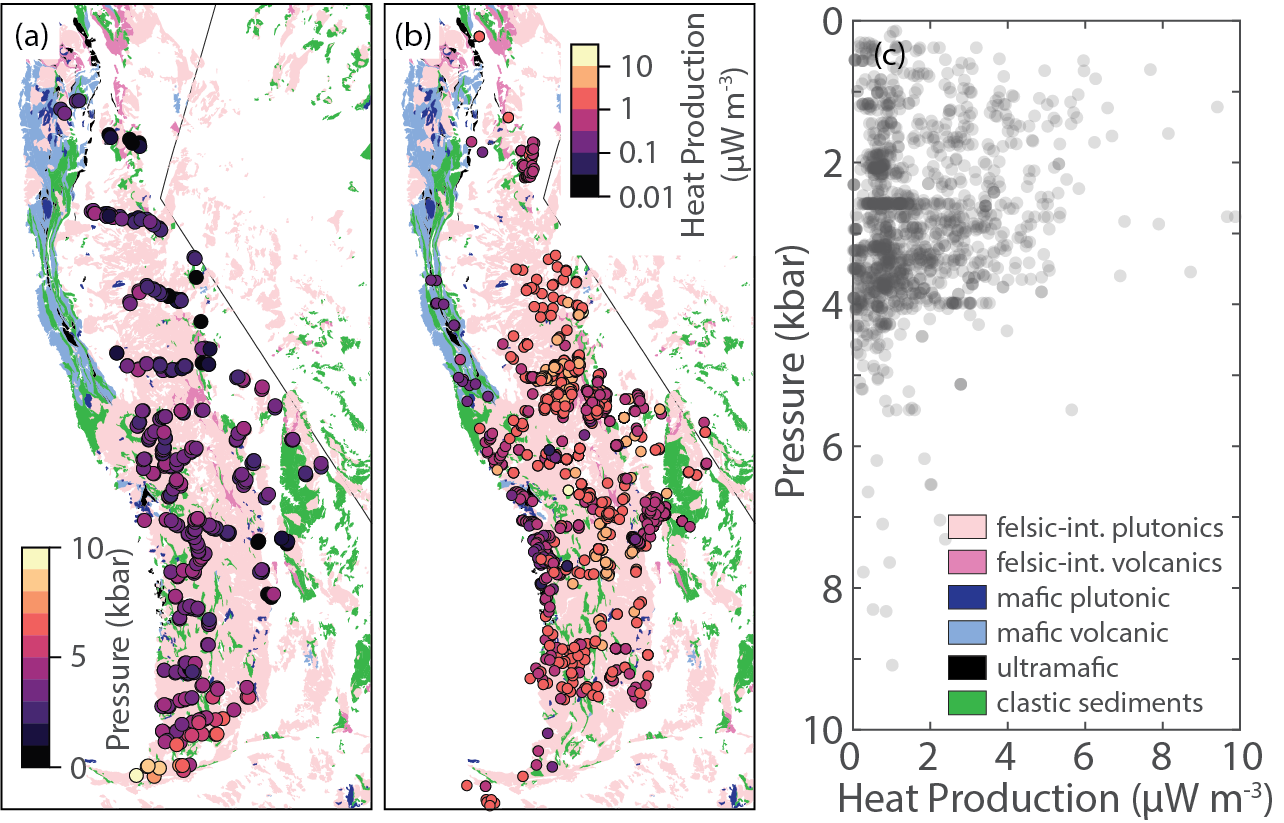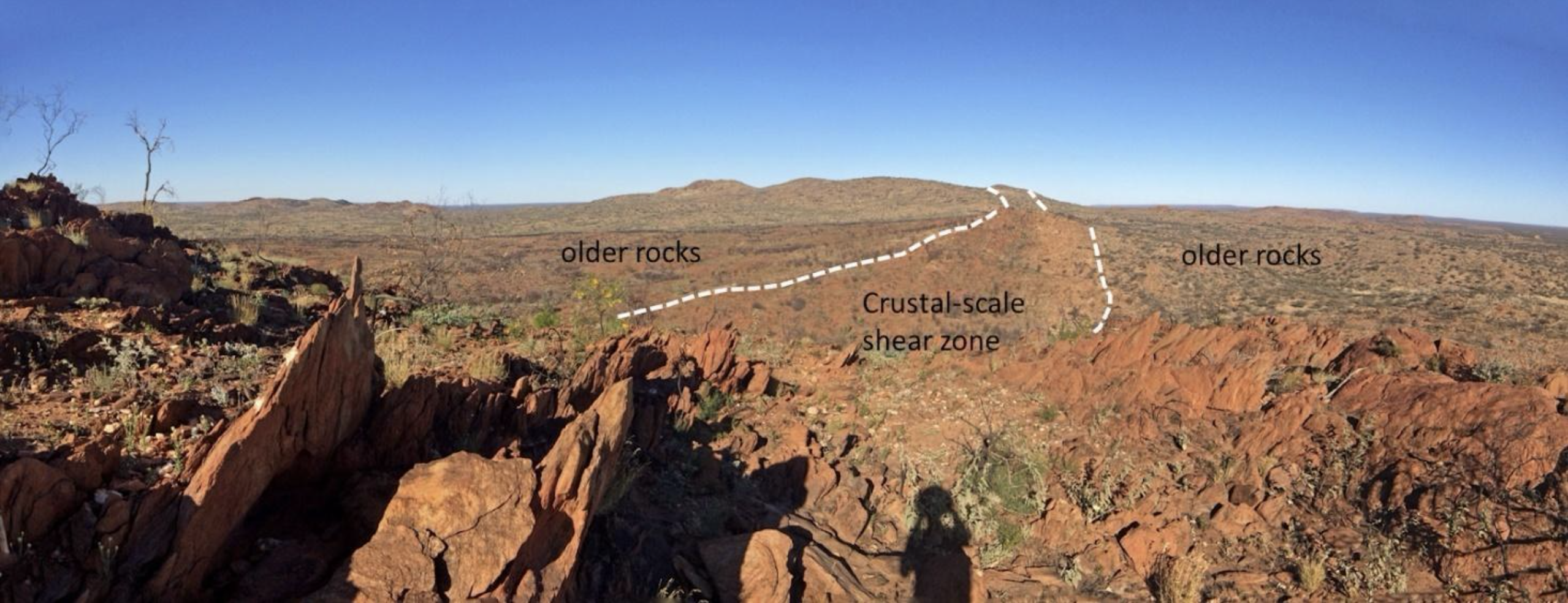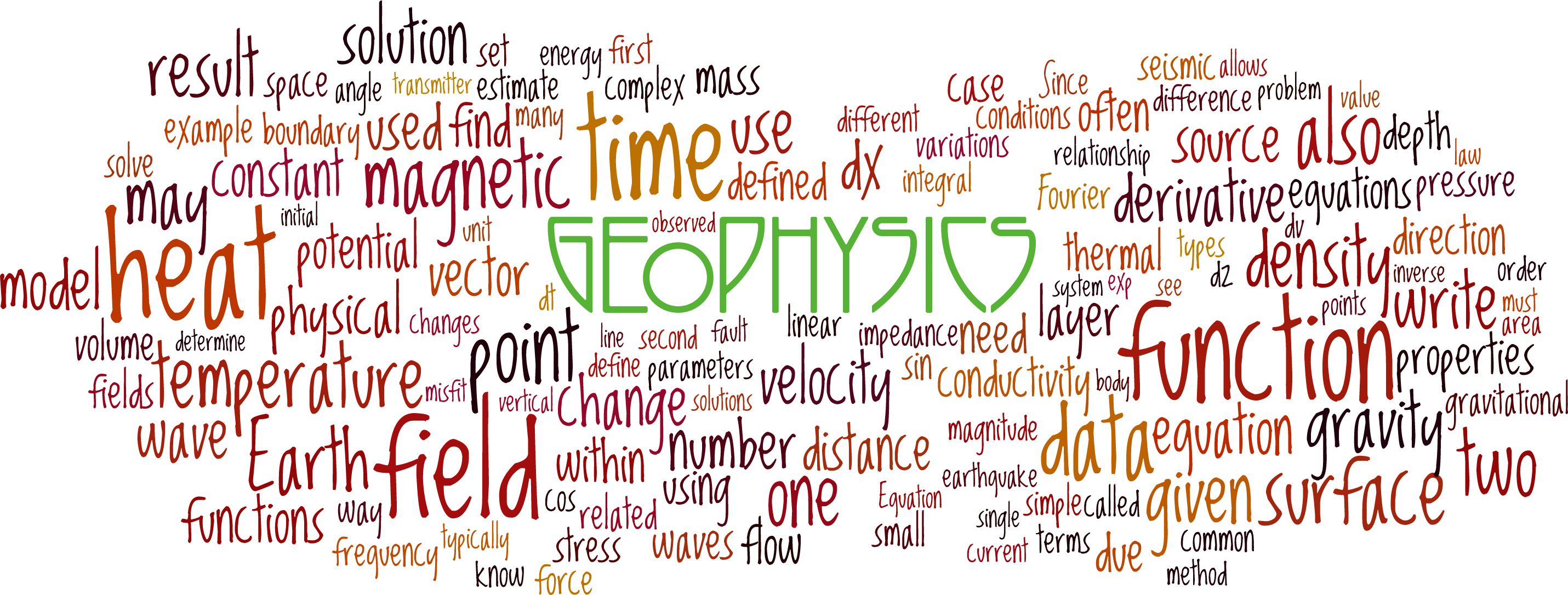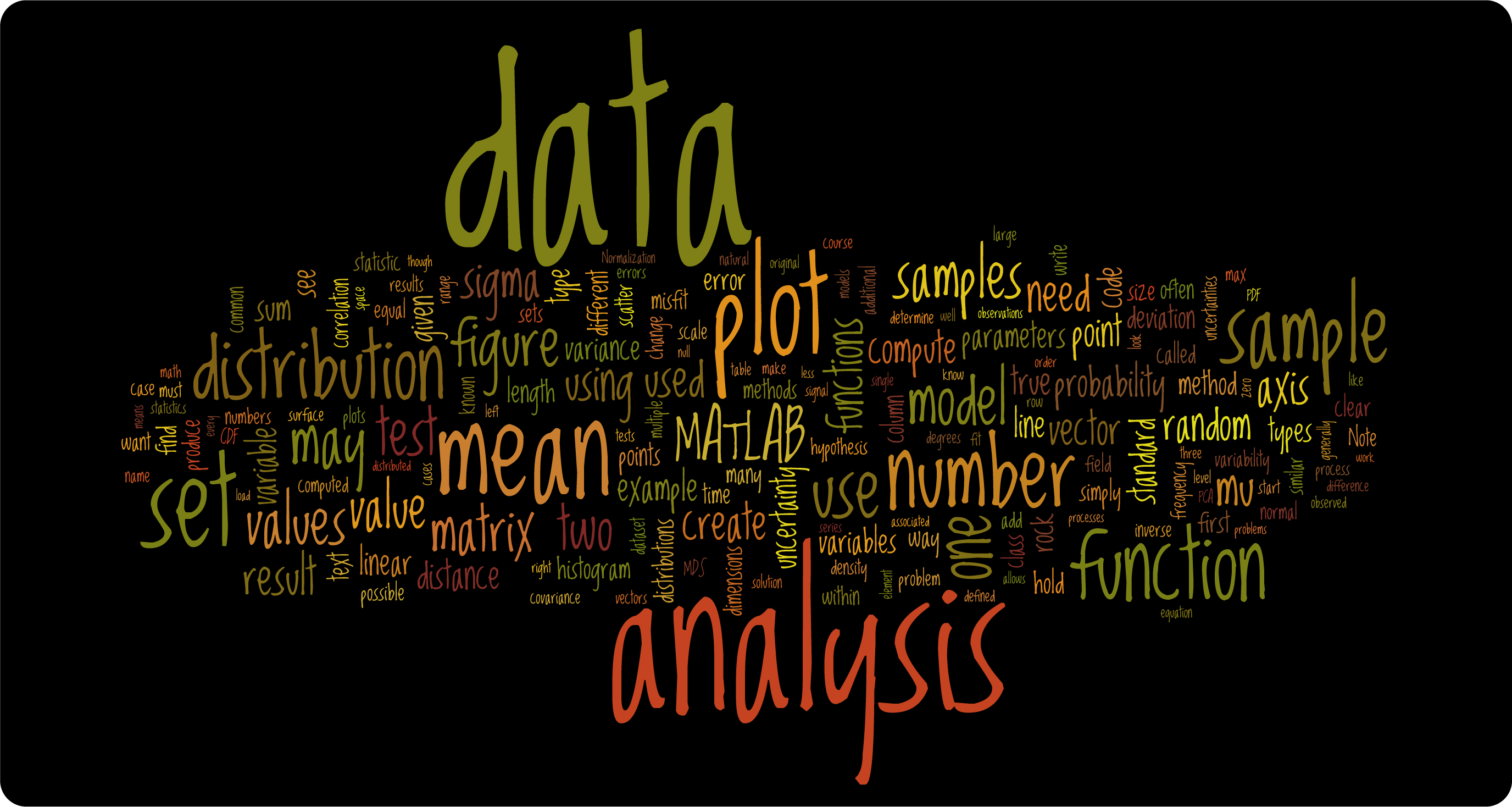
Dr Derrick Hasterok
Lecturer
School of Physics, Chemistry and Earth Sciences
Faculty of Sciences, Engineering and Technology
Eligible to supervise Masters and PhD - email supervisor to discuss availability.
Many chemical and physical processes within Earth are driven or throttled by temperatures in its interior. Despite temperature's importance, the data for predicting lithospheric temperatures are limited spatially by lack of coverage and hampered by the inaccessibility of rock samples from depth, particularly the lower crust.My research group focuses on improving models for the thermal structure of Earth’s lithosphere and the physical properties that produce or distort the flow heat. We address these shortcomings via laboratory measurements on rocks and data analytics applied to global datasets. Both avenues are used to improve prediction models for thermal properties of rocks that we cannot directly sample. Such methods are then used to develop global models for temperature and heat flow at continental to global scales and represents an intersection between geochemistry and geophysics. Our work provides important constraints on magmatic and metamorphic processes in active and past tectonic systems as well as the chemical and thermal evolution of Earth, both of which can be used to improve models of mineral and energy resource generation.
- My Research
- Career
- Publications
- Grants and Funding
- Teaching
- Supervision
- Professional Activities
- Contact
My research focuses on the study of heat and fluids deep within the Earth's crust and upper mantle. Much of the work is large scale, looking at continental to global scale patterns of heat flow and crustal radioactivity, or regional utilizing electromagnetic soundings and laboratory measurements to understand crustal hydration. Lately, my work has drifted into global geochemistry and data analytics, specifically looking at temporal evolution of granites and the sources of variability in radiogenic heat production.
For more information, you can check out my personal website: http://dhasterok.wixsite.com/world-of-wonder/
Several projects have required the compilation of large datasets including the Global Heat Flow Database (http://www.heatflow.org) and a global geochemical database (https://doi.org/10.5281/zenodo.2592822). I also have been releasing some of the codes that I used to analyze and process the data on GitHub (https://github.com/dhasterok), which includes links to codes for global geochemistry, protolith prediction, and global plate and province models.
Here's a video about the Global Geochemical Database that my group has compiled.
Honours projects
Which came first: chemical stratification or crustal thickness?
Subduction related volcanic arcs are among the most important tectonic settings for the chemical stratification and bulk composition of the continental lithosphere. Within volcanic arcs, most element concentrations appear to correlate with crustal thickness, dominated by the processes of fractional crystallization and assimilation. These relationships have led to new tools for estimating crustal thickness in extinct arcs. However, many important aspects that potentially affect the accuracy of these relationships are not well characterized. For example, the relationship between volcanics—from which these relations have been developed—and deeper plutonic rocks may respond differently to differentiation within the crustal column. Many shallow volcanics have been eroded in extinct arc terranes, variably exposing the plutonic rocks at different depths. Since crustal thickness estimates are currently derived from these deeper exposures, it is crucial that we improve our understanding of chemical differentiation within arcs. Your task will be to explore the chemical stratification in several obliquely exposed volcanic arc systems using a global geochemical database. You will produce geobarometric models to place geochemical analyses in a vertical context and then compare the behaviour across several arcs as a function of depth. If we are lucky, we’ll be able to answer the question posed by this project.

A background in geochemistry, tectonics, and/or data analytics would be useful for this project.
Depths of Erosion
Geophysical data are commonly used to estimate rock compositions within the crust, which works in a general mafic versus felsic sense. But knowing whether rocks are igneous or sedimentary is also required to develop reliable models of crustal construction and evolution. Furthermore, trace element distributions are characteristically different for igneous and sedimentary systems. As shown in the figure below, previous geologic models characterize most of the crust below the surface as metamorphic…a basically useless designation.
Your task is three-fold:
- construct a multidimensional map of rock type, age, and maximum depth of burial;
- develop a model for the proportion of igneous and sedimentary protoliths within the crust; and
- use your model to produce a model of heat production variations with depth within the crust.
Your results will be used to help develop more accurate models of lithospheric composition and improve estimates of crustal temperatures. And as part of this study, you will gain experience with GIS software and its application to large datasets (big data). Learn to do basic computer coding using Matlab or Python to statistically analyze the world’s largest academic geochemical dataset.
A background in tectonics, metamorphic petrology, and/or data analytics would be helpful for this project.
The Impact of Fluid Flow on Crustal Radioactivity – pushing heat around during tectonic reworking
Crustal radioactivity affects crustal temperatures and thus has a potential influence on a wide range of crustal and lithospheric processes including melting, magmatism, and strength. High crustal radioactivity may also be indicators of possible mineralization. Models of crustal radioactivity imply that it decreases with depth, more so than one would expect from a changing bulk composition, but why? Possible explanations include fractionation and crystallization processes, assimilation of enriched crustal material during ascent, and fluid redistribution.
The aim of the project is to explore the potential for fluid redistribution. Fluids, depending upon their composition, have the potential to mobilize heat producing elements (K, Th, and U) and redistribute them to different locations or stratigraphic depths. In this project, you will study the magnitude of the redistribution on several crustal-scale shear zones in Australia by collecting in-situ radioactivity and major element chemistry profiles across these shear zones. The project results will improve regional and global modelling of heat production distribution and temperature models of the crust and lithosphere that has undergone tectonic reworking.

A background in igneous/metamorphic petrology and/or geochemistry would be helpful for this project.
Compositional controls on physical properties: new constraints from laboratory measurements
One of the limitations to developing geophysical models of the crust is minimal control on physical property determinations on rocks directly relevant to the subsurface. As part of this project you will be measuring the physical properties on samples with known compositions from the South Australian drill core library. The goal of this project is to develop a set of robust, compositionally based models to predict a number of physical properties including, density, seismic velocity, thermal conductivity, and heat production. With such models, it will be possible to estimate the distribution of physical properties in the subsurface, providing a priori constraints for gravity, seismic and heat flow investigations. Your model may even be able to predict the conductivity of minerals within the rocks themselves.
You will gain experience with petrophysical measurement techniques. You will develop a sampling strategy that adequately samples a wide array of rock compositions among both igneous and sedimentary rocks. To analyse the data you will learn basic computer programming for data analysis and data management.
A background in geology, geophysics, and/or physics would be helpful for this project.
-
Appointments
Date Position Institution name 2013 - ongoing Lecturer (geophysics) University of Adelaide -
Language Competencies
Language Competency English Can read, write, speak, understand spoken and peer review -
Education
Date Institution name Country Title University of Utah United States PhD University of Utah United States MSc Caltech United States BS -
Postgraduate Training
Date Title Institution Country 2010 - 2013 Cecil and Ida Green Scholar Scripps Institution of Oceanography United States -
Research Interests
-
Journals
-
Book Chapters
Year Citation 2020 Hasterok, D., & Chapman, D. S. (2020). Isostasy, Thermal. In H. K. Gupta (Ed.), Encyclopedia of Solid Earth Geophysics (Vol. PartF4, pp. 847-854). Springer International Publishing.
DOI2016 Sclater, J. G., Hasterok, D., Goutorbe, B., Hillier, J., & Negrete, R. (2016). Marine heat flow. In Encyclopedia of Earth Sciences Series (Vol. Part 2, pp. 449-460). Springer Netherlands.
DOI2011 Hasterok, D., & Chapman, D. S. (2011). Isostasy, Thermal. In H. K. Gupta (Ed.), Encyclopedia of Solid Earth Geophysics (Vol. Part 5, pp. 662-668). Springer.
DOI -
Conference Papers
Year Citation 2011 Wannamaker, P., Maris, V., Hasterok, D., & Doerner, W. (2011). Crustal scale resistivity structure, magmatic-hydrothermal connections, and thermal regionalization of the Great Basin. In Transactions - Geothermal Resources Council Vol. 35 2 (pp. 1787-1790). San Diego, California.
Scopus72010 Wannamaker, P. E., Maris, V., Hasterok, D. P., & Doerner, W. M. (2010). Extensional tectonism, magmatic-hydrothermal connections and geothermal systems of the southwestern United States as revealed through magnetotelluric surveying. In Society of Exploration Geophysicists International Exposition and 80th Annual Meeting 2010 Seg 2010 (pp. 3908-3913). Society of Exploration Geophysicists.
DOI Scopus1 -
Conference Items
Year Citation 2022 Nixon, A. L., Glorie, S., Hasterok, D., Collins, A. S., Fernie, N., & Fraser, G. (2022). Low-temperature thermal history of the McArthur Basin: Influence of the Cambrian Kalkarindji Large Igneous Province on hydrocarbon maturation. Poster session presented at the meeting of Central Australian Basins Symposium IV - Exploring Australia’s Resource Frontier. Petroleum Exploration Society of Australia (PESA).
DOI2021 Hasterok, D. (2021). Improving thermal properties estimates of the Antarctic crust and their uncertainties. Poster session presented at the meeting of Abstracts of the American Geophysical Union Fall Meeting (AGU21). New Orleans, LA & virtual online: American Geophysical Union.
DOI -
Theses
Year Citation 2010 Hasterok, D. P. (2010). Thermal Regime of the Continental and Oceanic Lithosphere. (PhD Thesis, University of Utah). 2005 Hasterok, D. P. (2005). Thermal Isostasy on Continents: Applications to North America. (Master's Thesis, University of Utah). -
Datasets
Year Citation 2022 Hasterok, D., Halpin, J., Collins, A., Hand, M., Kreemer, C., Glorie, S., & Gard, M. (2022). New maps of global geologic provinces and tectonic plates: global tectonics data and QGIS project file.
DOI2022 Hasterok, D., Halpin, J., Collins, A., Hand, M., Kreemer, C., Glorie, S., & Gard, M. (2022). New maps of global geologic provinces and tectonic plates: global tectonics data and QGIS project file.
DOI2021 Fuchs, S., Norden, B., Artemieva, I., Chiozzi, P., Dedecek, P., Demezhko, D. Y., . . . Verdoya, M. (2021). The Global Heat Flow Database: Release 2021.
DOI2021 Sanchez, G., Halpin, J., Gard, M., Stål, T., Raimondo, T., Peters, S., & Burton-Johnson, A. (2021). PetroChron Antarctica – a geological database for interdisciplinary use.
DOI2019 Hasterok, D., Gard, M., Bishop, C., & Kelsey, D. (2019). Geochemical data for protolith classification testing.
DOI2019 Gard, M., & Halpin, J. (2019). Global whole-rock geochemical database compilation.
DOI2008 Hasterok, D. P. (2008). Revised global heat flow database. 2008 Hasterok, D. P. (2008). Revised global heat flow database. -
Preprint
Year Citation 2023 Willcocks, S., Hasterok, D., Halpin, J., Walsh, J., & Jennings, S. (2023). Compositional Controls on the Thermal Conductivity of Igneous Rocks and a Model for the Conductivity of Antarctic Crust.
DOI
ARC DP180104074
Understanding the future stability of of Antarctica's ice sheets are extremely important to mitigating the potential for sea-level rise associated with global warming. One of the key parameters in these models is the basal thermal conditions of the ice sheet. Our ARC discovery project aims to produce accurate estimates of crustal heat production, temperatures and geothermal heat loss that can be used to improve glacial models of ice flow and growth/retreat.
Collaborators: Martin Hand (UA), Jacqueline Halpin (UTas), Sandra McLaren (UM)
Students involved: Matt Gard and Simon Wilcox
ARC DP160104637
Deep (electrical) fluid pathways which extend to the near surface of the Earth are associated with some world-class mineral deposits. In this project, we investigate the effect of hydration on the electrical conductivity of the lower crust and the interpretation of deep electromagnetic soundings of the crust including the potential for identification of deep fluid pathways.
Students involved: Sam Jennings
I am the honours degree coordinator in Earth Sciences. If you wish to study an honours degree, feel free to contact me. To submit an application, you can submit an expression of interest on the Faculty of Sciences website. For a sampling of the types of projects that we have on offer you may peruse our program booklet.

Geophysics IIIA/IIIB – an introduction to geophysical fields and their application to the Earth. This course is primarily theory-based, exploring the physical properties of the Earth and their effect on gravity, magnetic, and temperature fields (IIIA), and electrical and seismic fields (IIIB). We relate the physical theory and mathematics to develop simplified models of the Earth that provide insight into its gross composition, structure and evolution.

Tectonics III – examines the prevailing theories for how the solid Earth evolves, with a focus on plate tectonics. In this course, we discuss how to identify tectonic processes and their physical controls, boundary forces, and surface expression and temporal evolution. We also cover non-tectonic processes that help us understand tectonics and widen the theory to a whole Earth theory for mantle convection. We wrap-up by exploring the evidence or lack thereof for tectonics within the solar system.

Geoscience Data Analysis – A short course for honours students covers a wide range of data analysis techniques used in Earth Sciences. The course is about a week long and covers topics in basic statistics, hypothesis testing, regression, multidimensional data visualization and analysis, geospatial visualization and interpolation, time-series analysis, and issues related to geochemical data.
Other courses I have taught in the past include:
- Earth's Interior I
- Geology for Engineers
- Exploration Methods III
-
Current Higher Degree by Research Supervision (University of Adelaide)
Date Role Research Topic Program Degree Type Student Load Student Name 2025 Co-Supervisor Advancing Lithospheric Understanding: Completing the Australian 3D Resistivity Model Doctor of Philosophy Doctorate Full Time Mr Fanrui Qiu 2022 Co-Supervisor Magnetotelluric AusLAMP geophysics-seismic Doctor of Philosophy Doctorate Part Time Mr David Brian Baker -
Past Higher Degree by Research Supervision (University of Adelaide)
Date Role Research Topic Program Degree Type Student Load Student Name 2018 - 2023 Principal Supervisor Constraining Subglacial Heat Flux in Antarctica from Thermal Conductivity and Subglacial Lakes Doctor of Philosophy Doctorate Full Time Mr Simon Robert Willcocks 2018 - 2021 Principal Supervisor Nature of the Lower Crust Doctor of Philosophy Doctorate Full Time Mr Samuel Scott Jennings 2018 - 2022 Co-Supervisor Understanding Marine Magnetotellurics Doctor of Philosophy Doctorate Full Time Jake Elias MacFarlane 2016 - 2021 Principal Supervisor Constraints on the thermal state of the continental lithosphere Doctor of Philosophy Doctorate Part Time Mr Matthew Geoffrey Gard 2016 - 2020 Co-Supervisor Hydrologic and Isotopic Lake Modelling for Palaeoclimate Research Doctor of Philosophy Doctorate Full Time Mr Martin James Ankor 2015 - 2018 Co-Supervisor Electrokinetic Methods and Applications in Australian Aquifer Settings: High-Dimension Electrical Tomography Imaging and Neural Network Filtration Techniques Master of Philosophy Master Full Time Joseph Rugari 2014 - 2018 Co-Supervisor Advances in Magnetotelluric Modelling: Time-Lapse Inversion, Bayesian Inversion and Machine Learning Doctor of Philosophy Doctorate Full Time Mr Dennis John Conway 2014 - 2019 Co-Supervisor Understanding interpretation limitations due to MT inversion variability: examples from the Mount Isa Province, Queensland, Australia Doctor of Philosophy Doctorate Full Time Mrs Janelle Maree Simpson 2013 - 2016 Co-Supervisor The resistivity and permeability of fractured rocks Doctor of Philosophy Doctorate Full Time Mrs Alison Louise Kirkby
-
Committee Memberships
Date Role Committee Institution Country 2019 - ongoing Board Member International Heat Flow Commission International Union of Geodesy and Geophysics Norway -
Memberships
Date Role Membership Country 2009 - ongoing Member Geochemical Society United States 2008 - ongoing Member American Geophysical Union United States -
Presentation
Date Topic Presented at Institution Country 2021 - 2021 EP12D-02 - Improving thermal properties estimates of the Antarctic crust and their uncertainties (Invited) Fall Meeting 2021 American Geophysical Union United States 2021 - ongoing The Lithosphere-Asthenosphere Boundary: Perspectives from Thermal Studies (Invited) International Lithosphere Program CoLiBrI Switzerland 2021 - ongoing The Global Geochemical Database Online AuScope Geochemistry Network - 2019 - 2019 C21F-1509 - Constraining Geothermal Heat Flux Beneath Ice Sheets Using Thermal Isostasy Fall Meeting 2021 American Geophysical Union United States 2019 - 2019 S22C-01 - Advances in thermal models for the lithosphere: geotherm construction, uncertainties, and validation (Invited) Fall Meeting 2019 American Geophysical Union United States
Connect With Me
External Profiles









